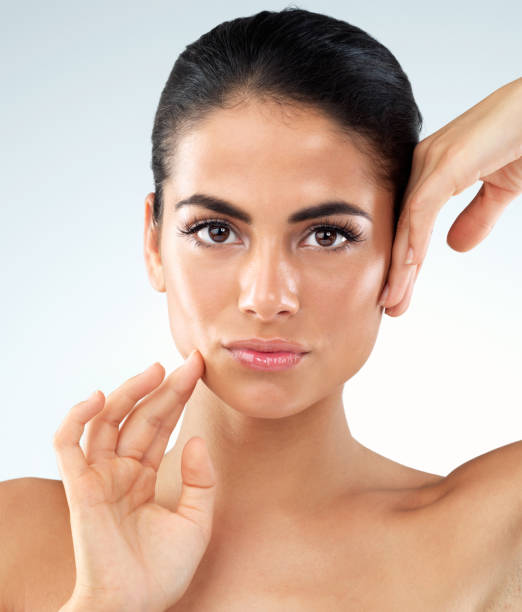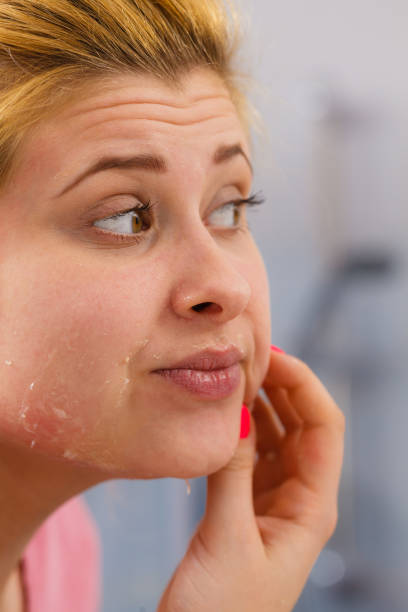Frustrated by stubborn dark spots, acne scars, or fine lines that refuse to fade no matter what you try? It’s time to consider a more powerful solution. Every week in my London clinic, I meet clients who’ve tried countless products with little success. The issue isn’t your commitment to skincare—it’s that some concerns require a professional approach. In this context, understanding The Science Behind Chemical Peels: What You Need to Know can be pivotal.The Science Behind Chemical Peels: What you need to know offers insights that empower you to make informed choices.
By understanding The Science Behind Chemical Peels: What You Need to Know, you’ll equip yourself with the knowledge to make the best choices for your skin.
Understanding The Science Behind Chemical Peels: What You Need to Know is crucial for achieving your skincare goals.
Knowing The Science Behind Chemical Peels: What You Need to Know allows you to choose the right treatment for your skin.
To fully grasp The Science Behind Chemical Peels: What You Need to Know, it’s important to consult with a professional.
Understanding The Science Behind Chemical Peels: What You Need to Know will empower your skincare journey.
Exploring The Science Behind Chemical Peels: What You Need to Know enhances skin treatment experiences.
Through The Science Behind Chemical Peels: What You Need to Know, you can better understand skin reactions.
Learning The Science Behind Chemical Peels: What You Need to Know helps in selecting suitable treatments.
Gaining insights into The Science Behind Chemical Peels: What You Need to Know will enable you to make informed skincare decisions.
Discussing The Science Behind Chemical Peels: What You Need to Know can clarify treatment expectations.
Here’s the good news: a professional chemical peel in London can do what your everyday products can’t. Unlike over-the-counter treatments that barely scratch the surface, a chemical peel treatment UK targets deeper layers of your skin, addressing the root causes of common issues like hyperpigmentation, acne scars, and fine lines. With over seven years of experience in aesthetic skin peeling, I’ve seen first hand how these treatments can transform the skin, revealing a clearer, more youthful complexion. Embracing The Science Behind Chemical Peels: What You Need to Know can enhance your understanding of these transformative treatments.
To truly appreciate The Science Behind Chemical Peels: What You Need to Know, it’s essential to recognize how these treatments uniquely benefit your skin.
Understanding The Science Behind Chemical Peels: What You Need to Know will change the way you view skin treatments.
Ultimately, The Science Behind Chemical Peels: What You Need to Know is key to rejuvenating your skin.
Discussing The Science Behind Chemical Peels: What You Need to Know can lead to a better understanding of your treatment options.
In this section, let’s delve deeper into The Science Behind Chemical Peels: What You Need to Know regarding various skin types and their responses to treatments.
One of the key aspects of The Science Behind Chemical Peels: What You Need to Know is understanding the skin’s reaction during the peeling process.
It’s fascinating how The Science Behind Chemical Peels: What You Need to Know can highlight the importance of choosing the right depth of peel for your skin concerns.
During your consultation, I’ll discuss The Science Behind Chemical Peels: What You Need to Know with respect to your unique skin history.
Whether you’re dreaming of smoother skin or want to lighten stubborn scars, the right skin peeling treatment can be your secret weapon. In this guide, I’ll take you through the essentials of chemical peel treatments in the UK—how they work, what types are available, and the remarkable chemical peel results you can expect. Ready to find out how a peel can give you the glowing skin you’ve been hoping for? With The Science Behind Chemical Peels: What You Need to Know as our foundation, let’s get started.
Let’s explore the practical aspects of The Science Behind Chemical Peels: What You Need to Know as it relates to your treatment plan.
Recognizing how The Science Behind Chemical Peels: What You Need to Know enhances the skin’s texture can greatly influence your decision.
Many clients note that The Science Behind Chemical Peels: What You Need to Know not only helps with acne scars but also rejuvenates their entire appearance.
Post-treatment, The Science Behind Chemical Peels: What You Need to Know continues to guide your skincare regimen for optimal results.
What Actually Happens During a Chemical Peel?
Imagine peeling away a dull layer of wallpaper to reveal the bright, smooth surface beneath. That’s essentially what a chemical peel does for your skin. During a professional chemical peel, a carefully formulated solution is applied to your face, breaking down the bonds that hold dead skin cells together. This process is far more effective than anything you could achieve at home with regular exfoliation.
Different peels work at varying depths, depending on the chemical peel strength levels and the type of peel used. For instance, a glycolic acid peel or salicylic acid peel addresses surface-level concerns, while a TCA peel treatment penetrates deeper to tackle more serious issues like acne scars and hyperpigmentation. Think of it as using different cleaning tools—some are designed for light touch-ups, while others go deeper for a thorough clean.
Why are professional treatments so effective? Unlike over-the-counter peels, a medical grade chemical peel is customized to your skin type and concerns. During your consultation, I’ll assess your skin’s sensitivity, past treatments, and current issues to choose the ideal peel for you. This precision not only ensures better chemical peel results but also minimizes the risk of over-exfoliation or irritation.

Understanding The Science Behind Chemical Peels: What You Need to Know can help clarify any misconceptions you may have.
The Amazing Benefits You Can Expect
With a firm grasp on The Science Behind Chemical Peels: What You Need to Know, you can approach your skincare journey with confidence.
In conclusion, The Science Behind Chemical Peels: What You Need to Know provides a framework for understanding how to achieve the best results.
Let’s talk about the facial chemical peel benefits you’ll notice immediately after your treatment. Many clients say their skin feels instantly smoother and looks brighter after just one session. By removing the buildup of dead skin cells, a skin rejuvenation peel allows your fresh, healthy skin to shine through.
The real magic, though, happens over the next few days and weeks. As your skin renews itself, you’ll see further improvements, such as the fading of acne scars, the reduction of fine lines, and a more even skin tone. Take Sarah, for example: after three treatments, her once-prominent acne scars were barely visible. Emma, another client, saw a significant softening of her fine lines after just one anti-aging chemical peel.
The Science Behind Chemical Peels: What You Need to Know will address common concerns and clarify the benefits.
Understanding The Science Behind Chemical Peels: What You Need to Know is essential for anyone considering skin rejuvenation options.
The Science Behind Chemical Peels: What You Need to Know can alleviate your concerns while providing you with confidence in the process.
When you embrace The Science Behind Chemical Peels: What You Need to Know, the process becomes less intimidating and more empowering.
When you comprehend The Science Behind Chemical Peels: What You Need to Know, you’ll be better equipped to follow through with post-peel care.
Finally, The Science Behind Chemical Peels: What You Need to Know will empower you to embrace the changes in your skin.
A chemical peel transformation doesn’t just make you look better—it can change how you feel. Clients often tell me how much more confident they feel after a peel, and they love that their skincare products absorb better and makeup applies more smoothly. That’s the power of healthy, rejuvenated skin.

The Treatment Journey: What to Expect
Your chemical peel treatment journey begins with a thorough consultation to determine the best approach for your skin. Whether you’re concerned about acne scars, melasma, or fine lines, we’ll recommend the perfect superficial chemical peel, medical-grade chemical peel, or deep chemical peel for your needs.
During the procedure, you might experience a mild tingling or warming sensation. The treatment takes around 30-45 minutes, and afterward, your skin may appear slightly pink—like after a brisk walk. Don’t worry, this is normal.
As for the chemical peel recovery time, your skin will gently peel over the next few days, which is when the true transformation begins. We’ll provide you with detailed aftercare instructions, including the importance of moisturizing, avoiding harsh products, and—most importantly—protecting your skin from the sun. Recovery generally takes about 3-7 days, depending on the peel’s strength, and most people return to their regular routine quickly. Following these aftercare steps is crucial for achieving optimal glowing skin after peel results.

Conclusion: Safety First with Professional Chemical Peels
Achieving your skin goals safely should always be the priority. At Nad Beauty Lab, we offer professional chemical peel treatments in London, ensuring that each peel is tailored to your unique skin type and concerns. This expertise minimizes risks like irritation or over-exfoliation, which are common with DIY methods. If you’re ready to start your journey toward glowing, renewed skin, contact me today at Nadia@nadbeautylab.com to discuss your personalized treatment plan.

FAQs About Chemical Peels
What is a chemical peel?
A chemical peel treatment involves applying a specialized solution to exfoliate dead skin cells and reveal fresher layers underneath.
What skin concerns can a chemical peel treat?
Chemical peels can address a range of concerns, including acne scars, fine lines, hyperpigmentation, melasma, and sun damage.
How does a chemical peel work?
The peel dissolves dead skin cells, allowing new, healthier skin to surface. The depth of the peel depends on the type—whether it’s a superficial chemical peel, deep chemical peel, or somewhere in between.
How long does it take to see results?
You’ll likely notice smoother, brighter skin immediately, but full chemical peel results continue to improve over the following weeks.
Is a chemical peel painful?
Most people experience only mild tingling or warmth during the procedure, with minimal discomfort.
What are the aftercare steps following a chemical peel?
Aftercare includes moisturizing, avoiding harsh products, and using sunscreen to protect your newly revealed skin.
How often should I get a chemical peel?
Most people benefit from a series of 3-6 peels spaced 4-6 weeks apart for optimal chemical peel results.
Can I get a chemical peel if I have sensitive skin?
Yes! We tailor the strength and type of peel, such as a gentle chemical peel, to suit even sensitive skin.
What’s the difference between professional and at-home peels?
Professional chemical peels are more potent and customized to your skin’s needs, delivering better and safer results compared to DIY peels.
How long is the recovery time after a peel?
Recovery time typically ranges from 3-7 days, depending on the peel’s strength.

